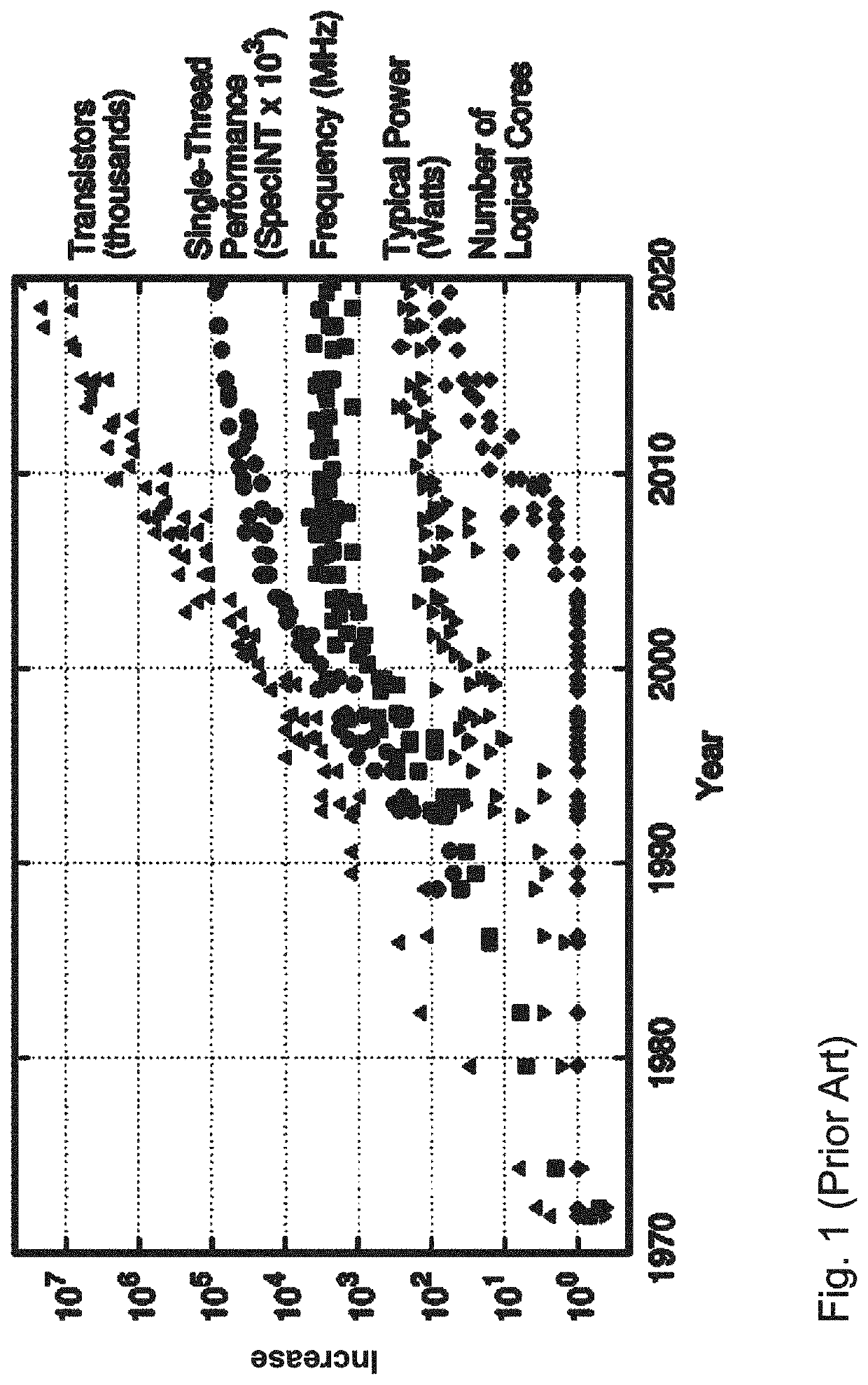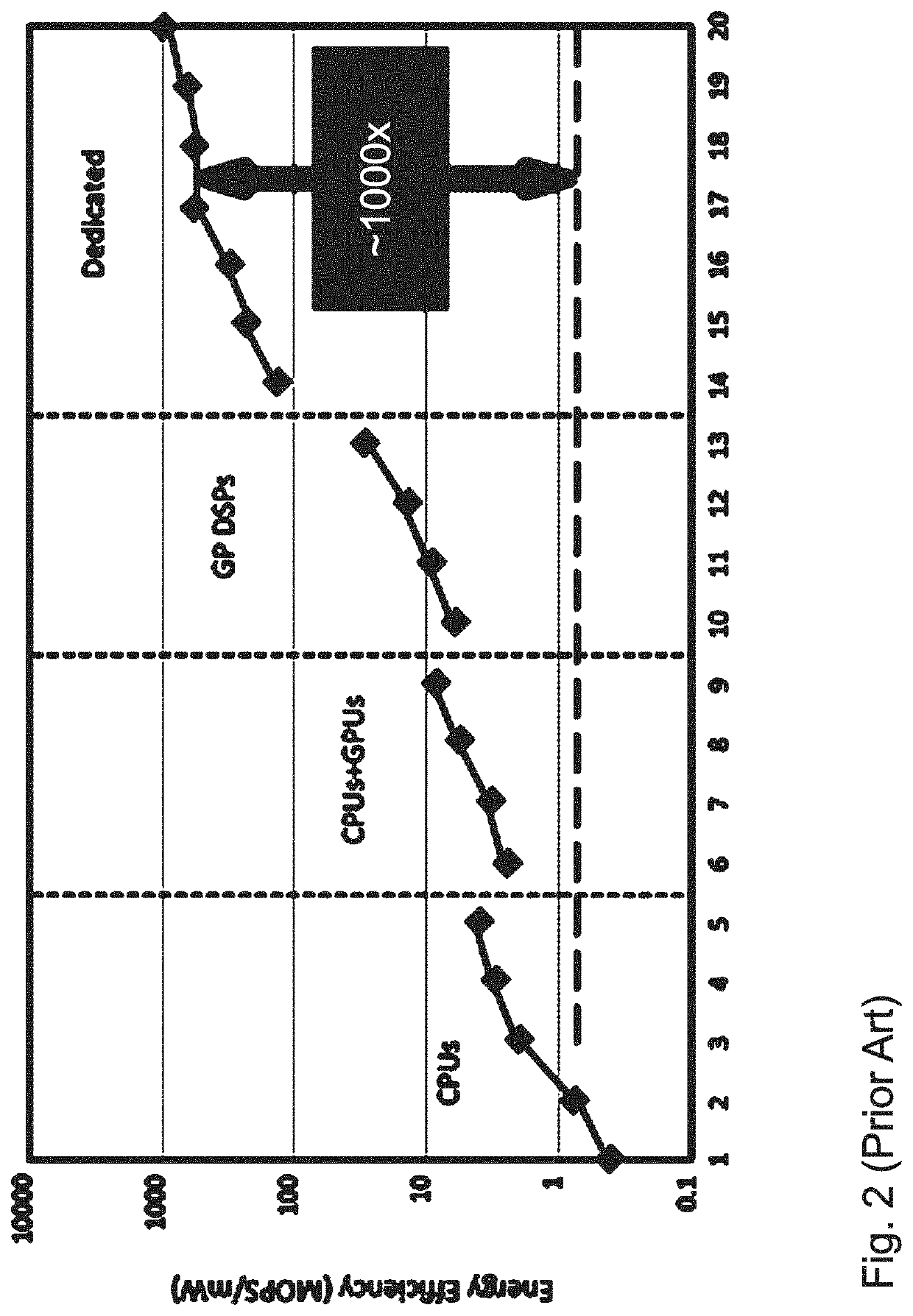Energy efficient microprocessor with index selected hardware architecture
a hardware architecture and energy-efficient technology, applied in the field of computing devices, can solve the problems of slowing down the growth of clocking speed, the performance growth of general-purpose microprocessors has been significantly retarded, and the clocking frequency of general-purpose microprocessors has not kept pace with the growth of transistors
- Summary
- Abstract
- Description
- Claims
- Application Information
AI Technical Summary
Benefits of technology
Problems solved by technology
Method used
Image
Examples
Embodiment Construction
[0066]The present invention is a System on a Chip (SoC) and method of use thereof that maintains the full flexibility of a general-purpose microprocessor while at the same time providing an energy efficiency that is similar to an ASIC. The disclosed SoC, referred to herein as the “Stella” SoC, implements a feature referred to herein as “index selected architectures” (ISA), whereby the “architecture” or “structure” of the microprocessor is controlled and optimized during program execution under software control, thereby causing the Stella SoC to function as a virtual ASIC. Unlike a traditional ASIC, however, the Stella SoC can be transitioned between different virtual ASIC architectures as needed under software control, such that the full programming flexibility of a general-purpose CPU or other SoC is maintained.
[0067]With reference to FIG. 4, the Stella SoC is organized as a plurality of Stella Reconfigurable Multiprocessors (SRMs) 412 supported by a Network-on-a-Chip (NoC). The No...
PUM
 Login to View More
Login to View More Abstract
Description
Claims
Application Information
 Login to View More
Login to View More - R&D
- Intellectual Property
- Life Sciences
- Materials
- Tech Scout
- Unparalleled Data Quality
- Higher Quality Content
- 60% Fewer Hallucinations
Browse by: Latest US Patents, China's latest patents, Technical Efficacy Thesaurus, Application Domain, Technology Topic, Popular Technical Reports.
© 2025 PatSnap. All rights reserved.Legal|Privacy policy|Modern Slavery Act Transparency Statement|Sitemap|About US| Contact US: help@patsnap.com



